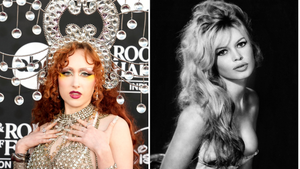It shouldn't be a surprise that talking about African-American history includes lessons about black LGBT people, and now that history is on display in the Smithsonian National Museum of African American History and Culture, opening this weekend.
"It's difficult to tell the story of African-American history and culture without acknowledging the accomplishments and contributions of African-Americans who cover a spectrum of identities and experiences, including gender identities and orientations," curator Aaron Bryant tells the Center for Black Equity. "Our goal is to tell the story of America's history through an African-American lens, and so the museum embraces and celebrates the fact that black communities are diverse, as is American culture and history."
The new museum is designed to give the visitor the sense of looking at history through the "lens" of the African-American experience, with five openings representing the "lenses."
There won't be a specific LGBT section; instead, several of the museum's collections will contain artifacts related to LGBT black life. The inaugural exhibits include 11 collections covering the range of historical, social and cultural contributions of African-Americans, with more exhibitions slated for 2017. Over 34,000 items from sports, music and performance, military history, civil rights, and more fill five levels and over 400,000 square feet of space. And the LGBT contributions are included throughout, just as in history itself.
One artifact is a playbill from the play The Colored Museum, a compilation of sketches written by Tony award-winning playwright George C. Wolfe in 1986. The play features 11 satirical depictions of African-American life, including Miss Roz, a black transgender woman originally played by late actor Reggie Montgomery.
A playbill from Lorraine Hansberry's work A Raisin in the Sun, partly parodied by The Colored Museum, is also a part of the "Taking the Stage" exhibition, featuring contributions to the arts. Hansberry, who died of cancer at 34, wrote about sexuality and dated women, and she joined the first lesbian political group, Daughters of Bilitis.
An iconic picture represents the Million Man March, a rally in Washington, D.C., first held in 1995, in the "Making a Way Out of No Way" exhibition. The black-and-white photo, shot by Roderick Terry, depicts an attendee holding a sign reading in part "I'm a black gay man." A D.C. activist who wrote about the event on its 20th anniversary recalled hundreds of black gay men and lesbians participating in the march.
The museum officially opens to the public Saturday and is booked through November. The kickoff celebration features three days of events, including a performance by bisexual musician Meshell Ndegeocello.






































































Charlie Kirk DID say stoning gay people was the 'perfect law' — and these other heinous quotes